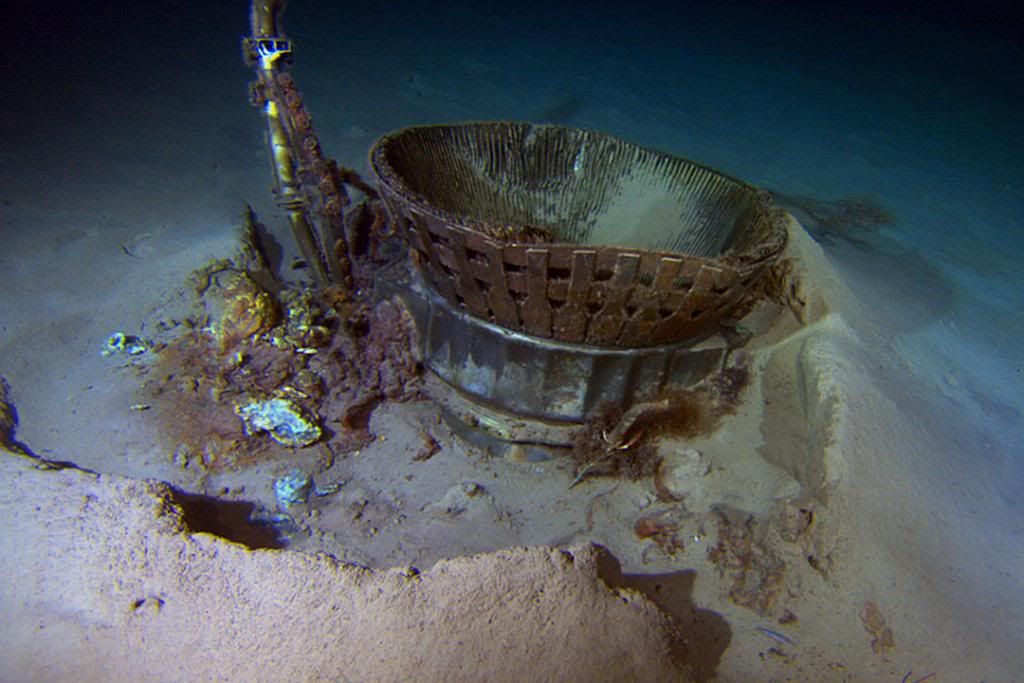Recovery of SaturnV F-1 motors. I had no idea they where doing this.
http://www.bezosexpeditions.com/updates.html
http://www.bezosexpeditions.com/updates.html






Nikon products kept aboard the ISS
•1 Nikon D3S digital-SLR camera: Delivered to the ISS via the Discovery with Space Shuttle mission STS-131, which returned on April 20, 2010. Images are primarily those of the surface of the earth and nighttime scenes. Standard consumer product (no modifications).
•8 Nikon D2XS digital-SLR cameras: Modified according to NASA specifications for recording extravehicular activities (EVA)
•36 NIKKOR lenses (including three teleconverters)
•7 SB-800 Speedlights
•4 D2XS eyepieces: Eyepieces made exclusively for NASA Special eyepiece viewfinders that enable image framing and verification through a space helmet with extravehicular activities.
•Miscellaneous (filters, cables, etc.)
 .
. .
.Sim man / other space enthusiasts, I need your help.
I visited the observatory in Kielder a couple of weeks ago and had a great time. Sadly it was cloudy and snowing so not much star-gazing, so instead we had an introduction to astronomy and astrophysics which I found really interesting.
Does anyone have any personal recommendations for a book to get me started in astrophysics and astronomy? I know the info will be freely available online, but it's not the same as a good book.
Cheers!

 . Cosmos on the other hand seems much more easily digestible, think I'll go with that one.
. Cosmos on the other hand seems much more easily digestible, think I'll go with that one. .
.Space is a world devoid of the things we need to live and thrive: air, gravity, hot showers, fresh produce, privacy, beer. Space exploration is in some ways an exploration of what it means to be human. How much can a person give up? How much weirdness can they take? What happens to you when you can’t walk for a year? have sex? smell flowers? What happens if you vomit in your helmet during a space walk? Is it possible for the human body to survive a bailout at 17,000 miles per hour? To answer these questions, space agencies set up all manner of quizzical and startlingly bizarre space simulations. As Mary Roach discovers, it’s possible to preview space without ever leaving Earth. From the space shuttle training toilet to a crash test of NASA’s new space capsule (cadaver filling in for astronaut), Roach takes us on a surreally entertaining trip into the science of life in space and space on Earth.
In this thrilling journey into the mysteries of our cosmos, bestselling author Michio Kaku takes us on a dizzying ride to explore black holes and time machines, multidimensional space and, most tantalizing of all, the possibility that parallel universes may lay alongside our own. Kaku skillfully guides us through the latest innovations in string theory and its latest iteration, M-theory, which posits that our universe may be just one in an endless multiverse, a singular bubble floating in a sea of infinite bubble universes. If M-theory is proven correct, we may perhaps finally find answer to the question, “What happened before the big bang?” This is an exciting and unforgettable introduction into the new cutting-edge theories of physics and cosmology from one of the pre-eminent voices in the field.

